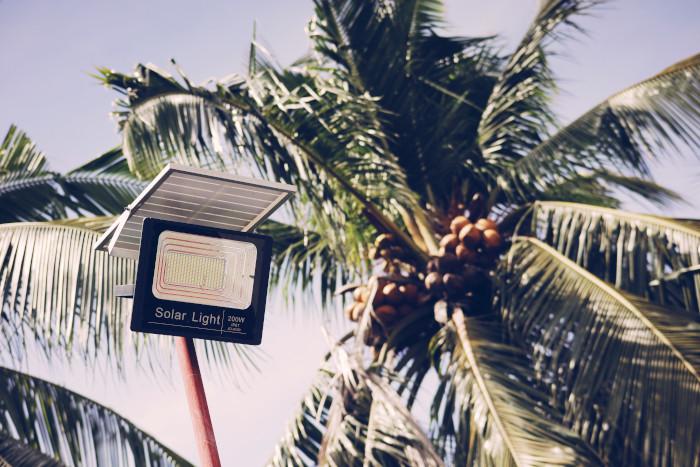Solar security lights have become a popular solution for homeowners who are looking for reliable, cost-effective lighting. In addition to providing reliable illumination during the night, this energy-efficient fixture also enhances security. However, when selecting solar security lights for outdoor use there are certain factors that need to be taken into account in order to get the most from this useful home accessory.

Resistance to the elements
Simply put, an IP rating is a measure of how waterproof or weather-resistant an item is. This is especially important for outdoor solar lights, as they’re going to be exposed to various weather conditions and elements.
“IP stands for Ingress Protection and relates to the amount of protection the fixture will have against solids and liquids,” says Singleton. “A good rating for an outdoor solar light would be IP65. The first number refers to the ability to repel dust and debris, six being the highest. The second number refers to how airtight the fixture is. Level five will [protect] against angled spray, while level eight can be completely submerged in deep water.”
When you see an IP rating with an X in it, this means the product does not offer protection for that category. For example, IPX4 means the device is protected from water splashes in all directions, but not from dust and debris. Source: RealSimple
Brightness
Lumen (plural lumens) is a unit to measure brightness, expressed numerically. For example, floodlights with around 1,000 lumens are a step up in brightness from what you’d get on average from a spotlight; floodlights from 1,000 to 1,500 lumens will likely cover an average driveway or patio; 1,500 to 2,000 lumens is good for mid-size backyards and patios, and longer driveways. Floodlights ranging from 2,000 to 3,000 lumens cover large areas, and anything over 3,000 is generally sufficient for extra-large spaces.
Unless you live in a rural area, you’ll also likely need to consider your neighbors’ tolerance of brightness, and you may want to confirm in advance if the light meets your town’s requirements to avoid needing a permit. Source: PopularMechanics
Duration
The charge time refers to the hours of sunlight needed to fully charge the battery, whereas the run time is how long it will produce light during the night. Various factors may influence the charge and run time such as weather conditions. A charge time of 6 to 7 hours is recommended. A run time of 10 to 12 hours is suitable, however, this may depend on the amount of sunlight your location receives and the power setting you’ve selected on the light.
Look for a device that has manual and automatic settings. This will allow you to activate or deactivate the lights as required and adjust the brightness to conserve battery power. Source: GardenGateMagazine
If you’re looking for more ways to improve your home’s security, give us a call! We’ll be more than happy to help.
Contact:
(778) 868-4628
